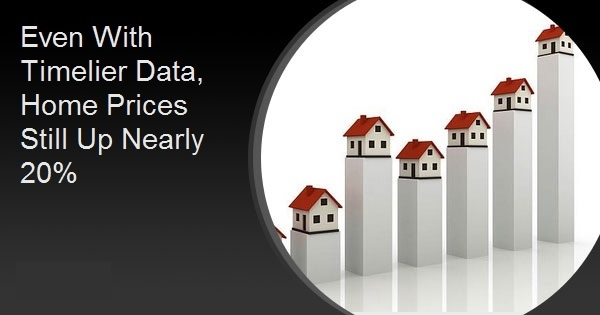Even With Timelier Data, Home Prices Still Up Nearly 20%
The biggest issue with the two most widely followed home price indices (FHFA and Case Shiller) is that the underlying data is almost 2 months old by the time it's released. For instance, the last set of reports came out on June 28th. They covered the month of April.
That's not really a big deal when prices move in more stable patterns, but post-covid price movement has been extreme. Moreover, it's hard to miss news about price cuts ramping up around the country--especially in the past month.
We'll be waiting 2 more weeks for the big indices to update, but Fannie Mae has updated Q2 price data for us today. It showed that, as of May, home prices still hadn't seen any major cooling effect from lower affordability and significantly higher rates. Fannie's data was actually a bit stronger than FHFA's, with an annual gain of 19.4% vs FHFA's 18.8%.

What gives? How are home prices defying gravity despite headwinds? First off, this is very much a battleship in a river situation. Price appreciation will definitely ebb. Outright declines remain debatable depending on geography and price range. Remember, a price cut on a listed home is not a price decline.
Prices are measured via a "repeat sales" method, which is the industry standard. It means that the same home sold in May of 2021 would need to have sold for less in 2022 for there to actually be a decline in prices. When a $500k home in May of 2021 lists for $620k in May of 2022 and experiences a "price cut" to 599k before receiving multiple offers, prices are still rising.
As always, that's just one example of how things can happen. Location matters, but the point is that would need to be happening almost everywhere for mainstream indices to show declines.
Fannie Mae Chief Economist Doug Duncan shared additional thoughts on the strong price performance in Q2 2022: "Home prices maintained a near-historic pace of appreciation in the second quarter, as low levels of housing inventory continued to support price growth. At the end of 2021 and extending into 2022, we believe many homebuyers pulled forward their purchase plans to avoid expected increases in mortgage rates, contributing to demand for homes and strong price appreciation. Given the sharp rise in mortgage rates since that time, and the resulting negative impact on affordability to potential homebuyers, we expect purchase demand to cool in the quarters ahead, and for home price appreciation to moderate as a result."





